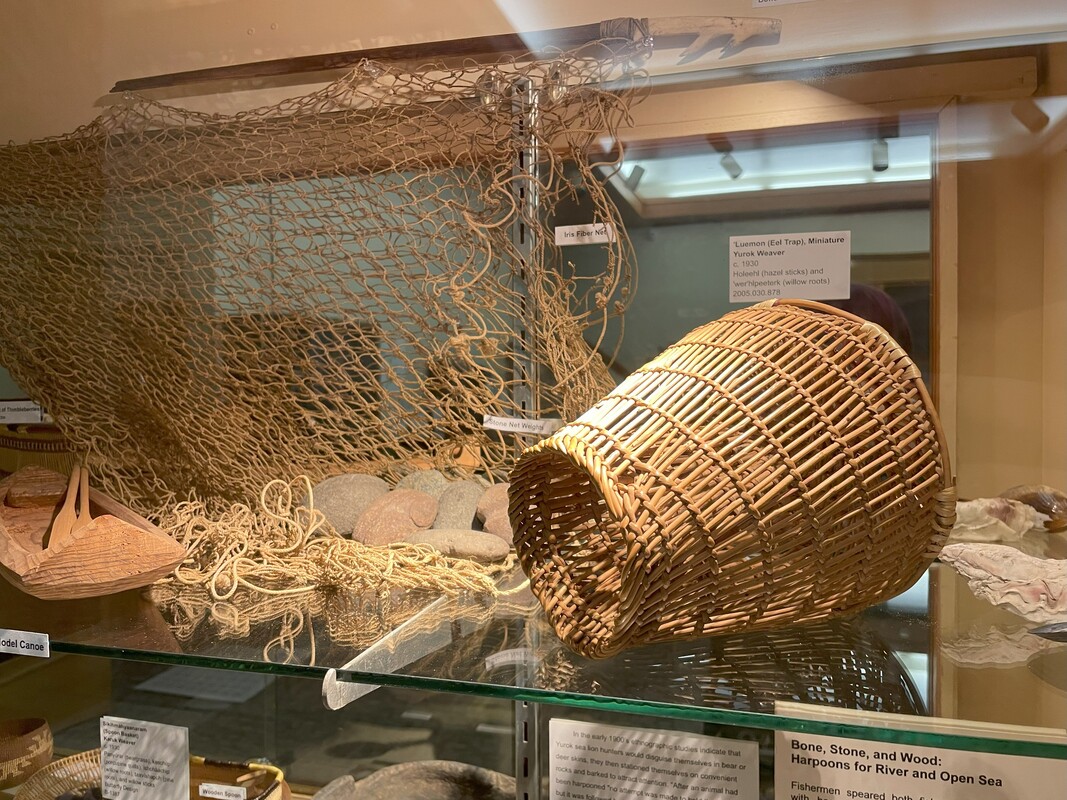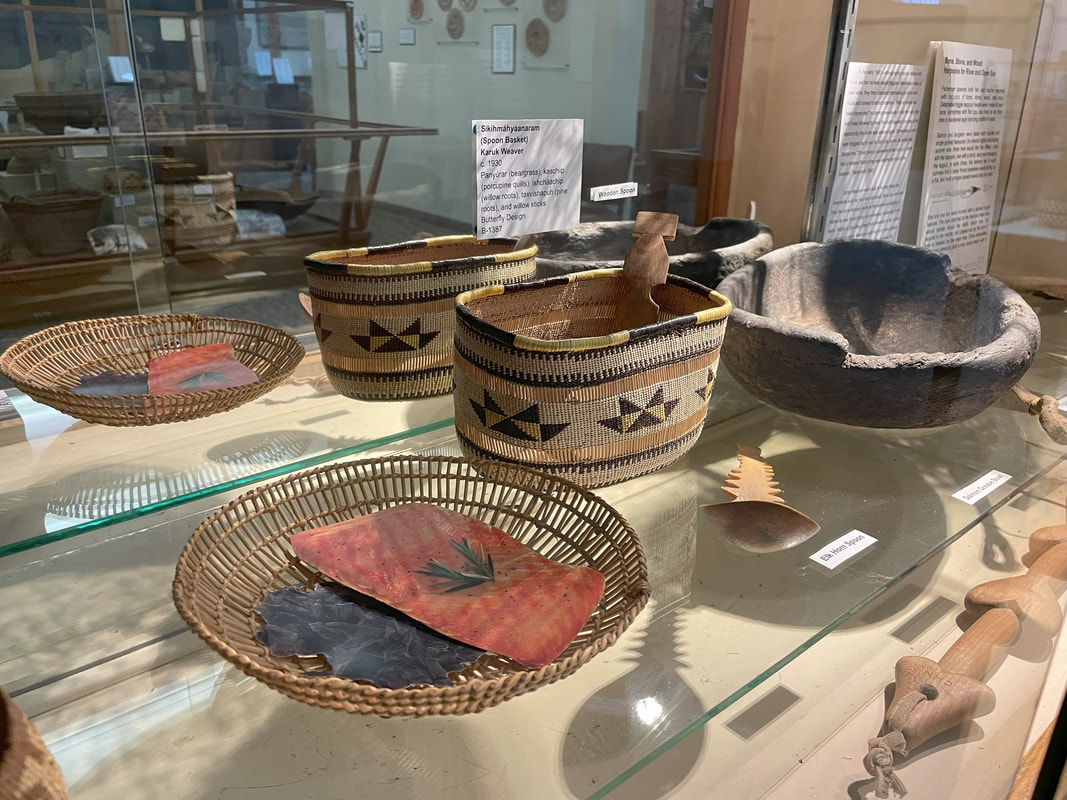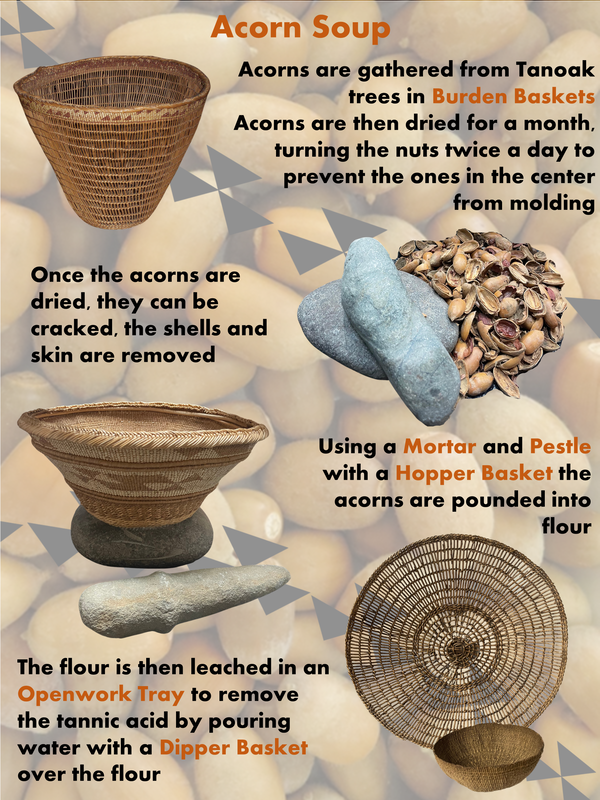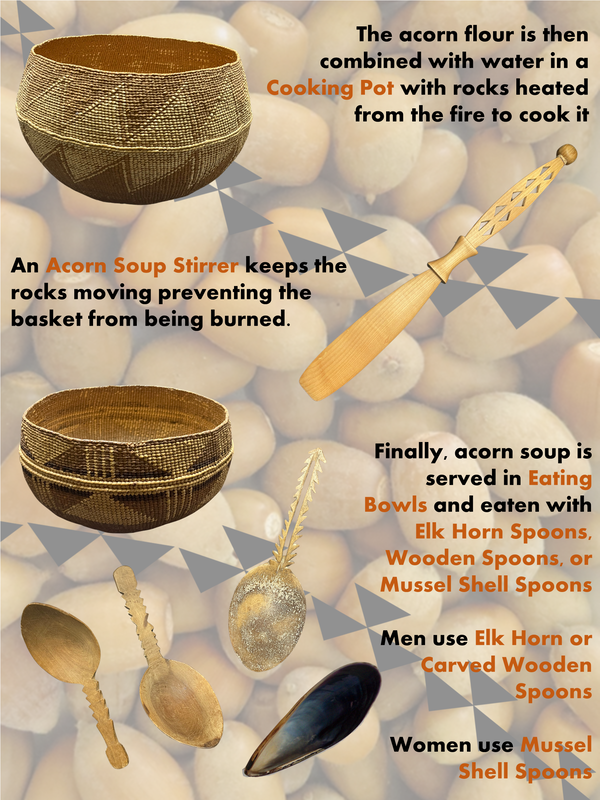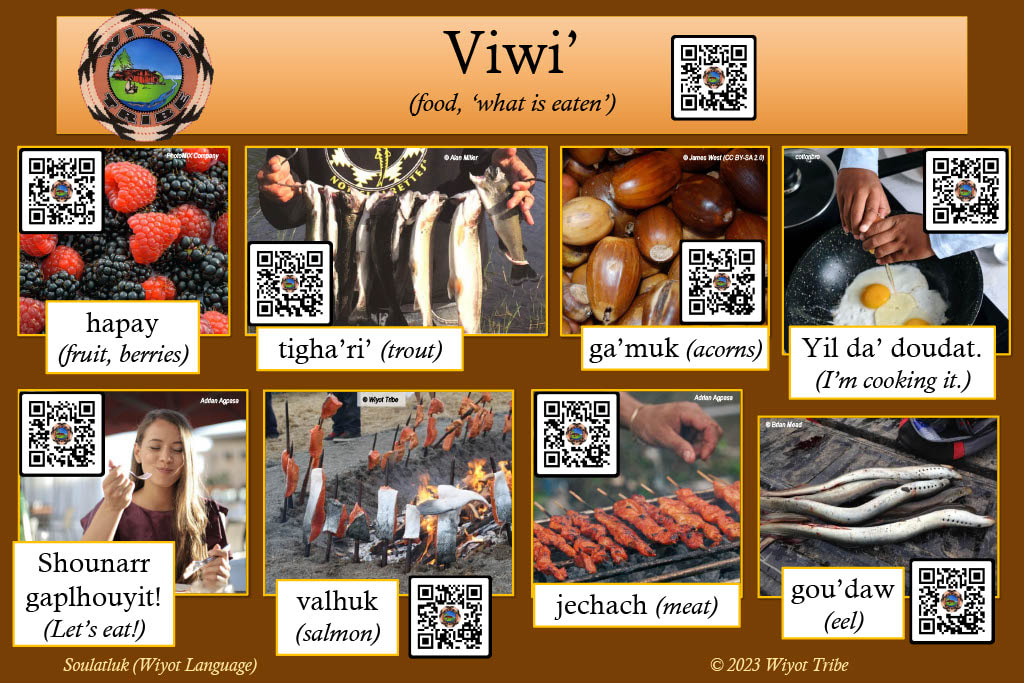Shounarr Gaplhouyit! Let’s Eat!
Shounarr Gaplhouyit! Let’s Eat! And Tá Ávahiv! It's Time to Eat! are two exhibits in Nealis Hall that dive into the extensive history of Indigenous foodways. The Yurok, Karuk, Hupa, Wiyot, and Tolowa Tribes have lived in this region since time immemorial. That deep history with the landscape has resulted in countless uses for the natural resources throughout the Tribes. Salmon and acorns are critical food sources both for nutritional value and for cultural practices. Salmon and acorns are intimately related to spiritual practices and religious ceremonies. They are viewed as gifts from The Creator.
Beyond salmon and acorns, the Indigenous communities have found that many mushrooms, berries, and herbs make delicious meals, teas, or ciders. Elk and deer are hunted for their meat, which can be dried and stored for long periods. Smelt are caught along the coast and dried on the beach. Seaweed is harvested, washed with fresh water, and dried in round cakes to be used as a source of salt. Through centuries of living on this landscape, the Indigenous communities have found uses for nearly every plant and animal in the region.
Beyond salmon and acorns, the Indigenous communities have found that many mushrooms, berries, and herbs make delicious meals, teas, or ciders. Elk and deer are hunted for their meat, which can be dried and stored for long periods. Smelt are caught along the coast and dried on the beach. Seaweed is harvested, washed with fresh water, and dried in round cakes to be used as a source of salt. Through centuries of living on this landscape, the Indigenous communities have found uses for nearly every plant and animal in the region.

